14 Basic Guitar Chords for Beginners
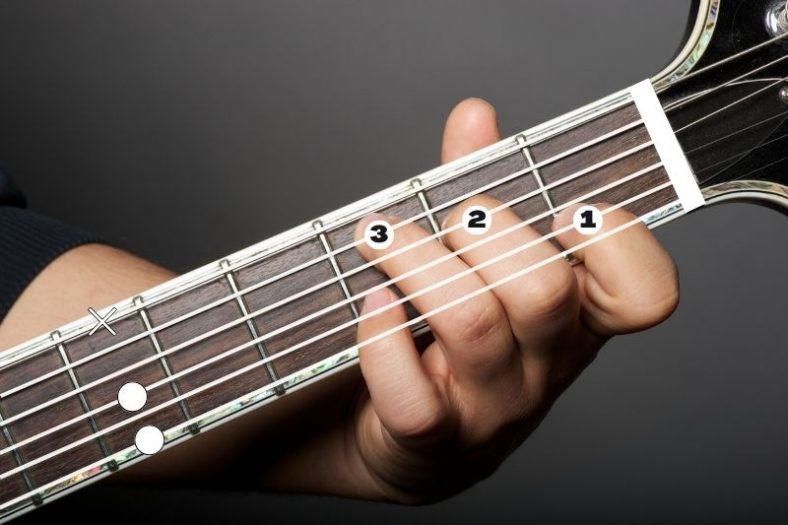
Learning guitar can be challenging at first, but once you figure out how to read the chords presented as diagrams (chord charts), you’ll be ready to tackle and learn any song you wish to play.
Almost every song out there has a guitar tab you can use to practice the chords. Most of them will show you chord progressions represented with chord diagrams. This article will show you how to read the chord diagrams correctly and show you the 14 most common guitar chords.
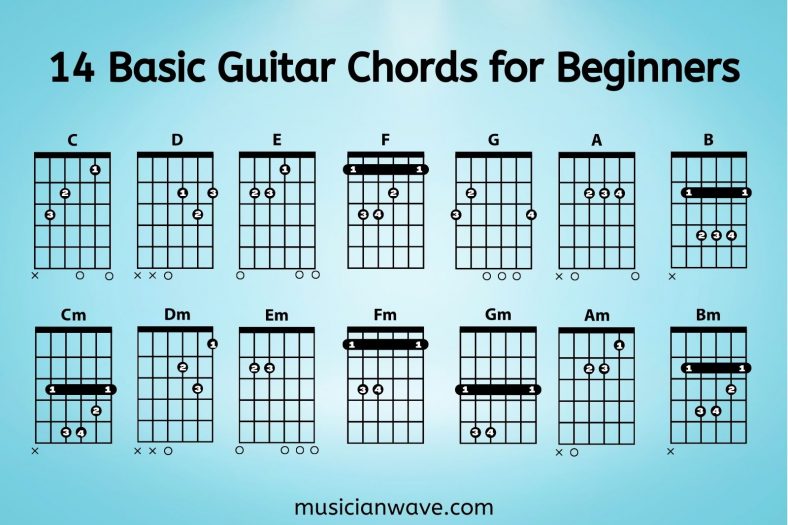
A chord diagram shows the neck of the guitar with the E string being on the leftmost, consisting of the following:
- Circles. Placed right under the neck, they symbolize “open string.” You have to play that string without any notes on it.
- “X” sign. Different strings are marked with “X,” meaning that you do not play that string in that particular chord.
- Numbers. The numbers in the circles on the fret show you which note to play and with which finger. Number 1 is the index finger, and 4 is the pinkie.
Once you get this down, almost everything will become easier. With this knowledge, you can tackle any song and learn how to play it. Before we get ahead of ourselves, let’s review the 14 basic guitar chords that are great for beginners.
We will take a look at the minor and major chords, the most critical chords in music, and they are the ones you should be learning first. Major chords are made up of three notes, and because of that, they are called triads. Major chords are often described as happy chords. Minor chords are written with the letter of the root note, followed by a small “m” representing the minor.
For further information, you can check out this beginner’s guide to music scales.
Contents
1. C Major
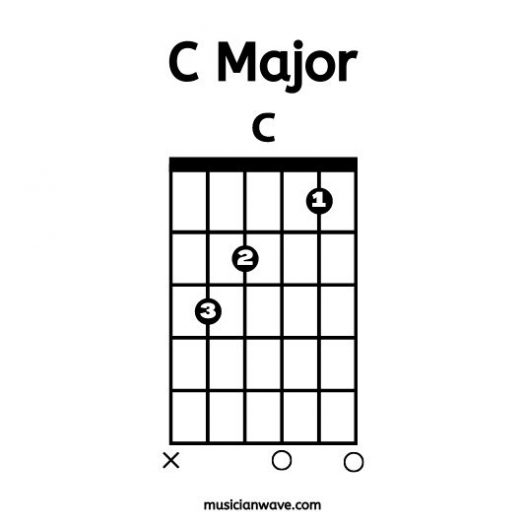
C Major is one of the most essential chords to learn as soon as possible. As opposed to other basic chords, C Major can be a little more difficult to practice because you have to stretch your fingers quite a lot, but with practice, you can master it pretty fast. The notes that you play when you play the C Major chord are C, E, and G.
2. D Major
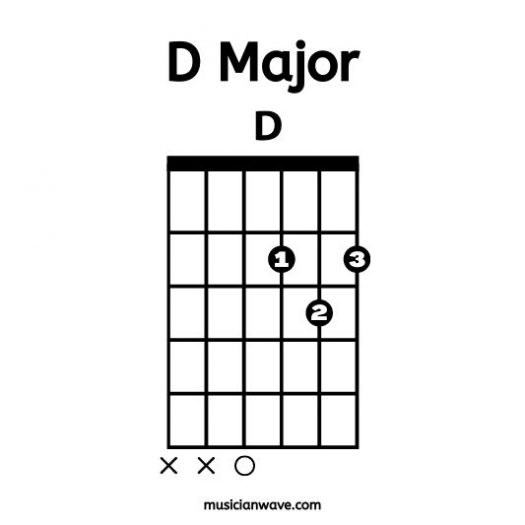
With the D Major chord, you play only four strings and leave out the E string and the A string. You will most likely remember this chord if you think of a triangle because that’s the shape your fingers make while playing this chord. Once you play it, you will also notice how a lot of songs are played with D Major.
3. E Major
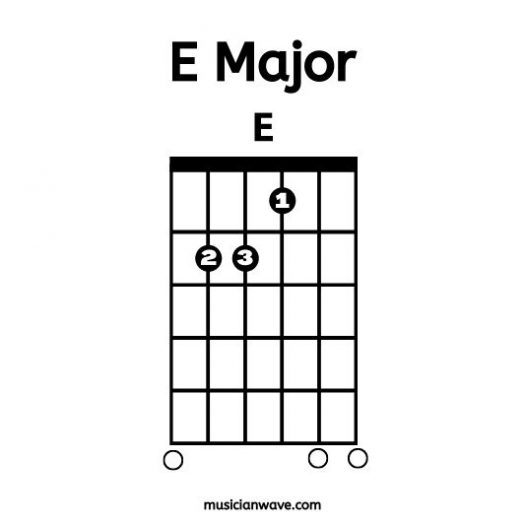
E Major is a chord where you play all the strings on the guitar. It’s also one of the easiest! Your second and third fingers go to the second fret of the A and D strings, while your first finger goes to the first frat of the G string. If you already tried C Major and D Major, this one will be the easiest by far.
4. F Major
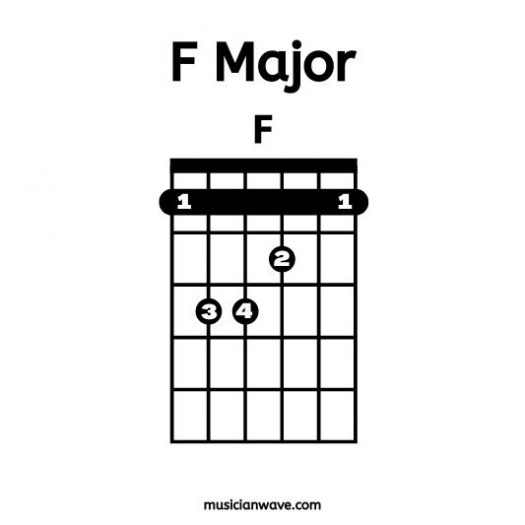
The F Major chord may seem like one of the hardest to grasp at first because this is the first chord you will learn where you have one finger covering the whole first fret. You also have to add the rest of the notes with your other fingers. It’s a very popular and useful chord so make sure to spend enough time with it and learn it as soon as possible.
5. G Major
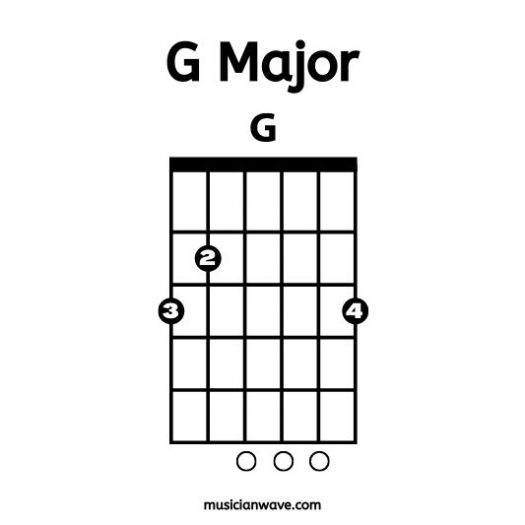
If we weren’t listing the chords by the musical scale, G Major would be one of the first ones on the list. It’s one of the most common chords played in countless songs, and it’s easy to learn too! Like the E Major and F Major, you also play all six strings with the G Major.
6. A Major
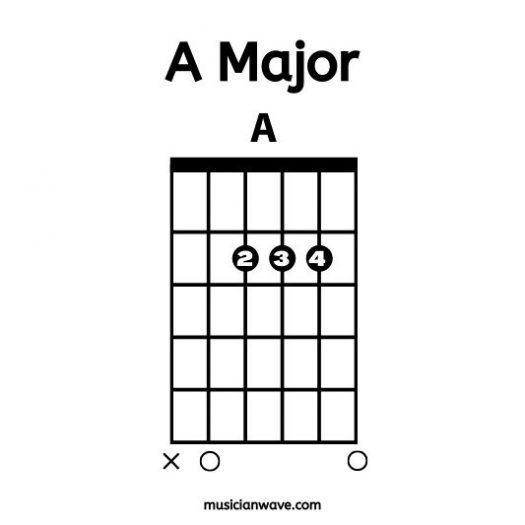
A Major is also pretty easy to learn, as it requires your second, third and fourth finger, all on the second fret. With this chord, you play five strings, leaving out the E string. Take your time and make sure you nail this one perfectly.
7. B Major
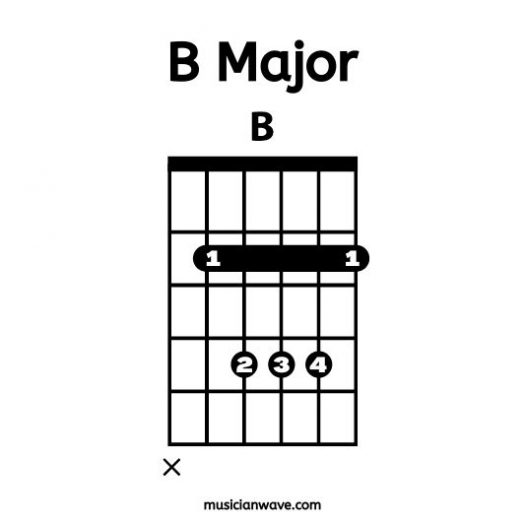
B Major also requires a little bit more effort than the others, but with practice, it will become easier. Also, it would be wise if you perfect the other chords first and then start practicing B Major more. B Major is the last Major chord on this list.
8. C Minor
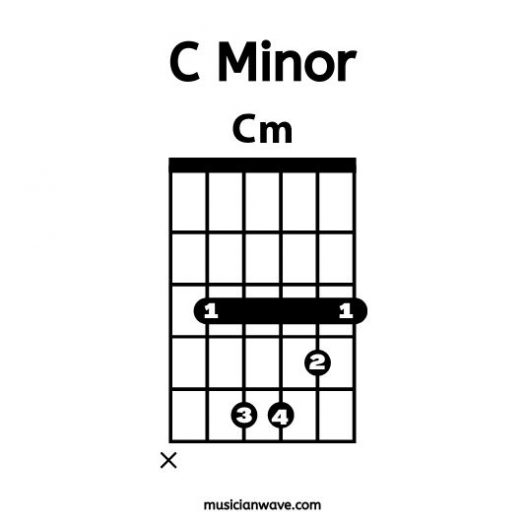
C Minor is the first Minor chord I’ll discuss, but don’t worry, not all minor chords are more complex than their Major counterpart. The best way to explain how to do C Minor is to take the F Major shape, start it from the third fret, and everything goes one string lower, leaving out the E string.
9. D Minor
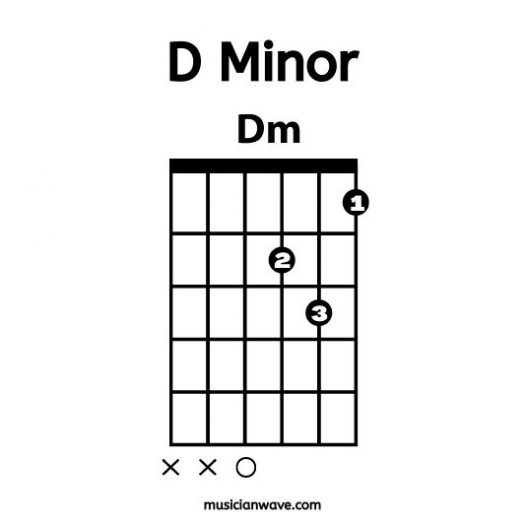
D Minor is a pretty simple and straightforward chord to play. It’s also a very important chord used a lot; therefore, it should be higher on the priority list of learning the chords when you start out.
10. E Minor
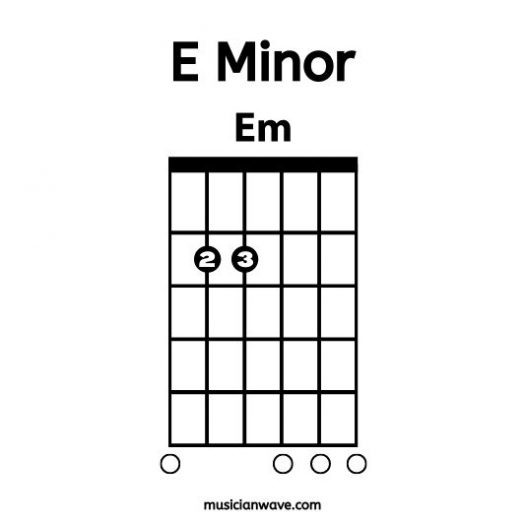
You can think of E Minor as an easier version of E Major. You need to leave out your first finger and instead play the G open string. There is no easier explanation for it, and if you already know E Major, this will be a breeze.
11. F Minor
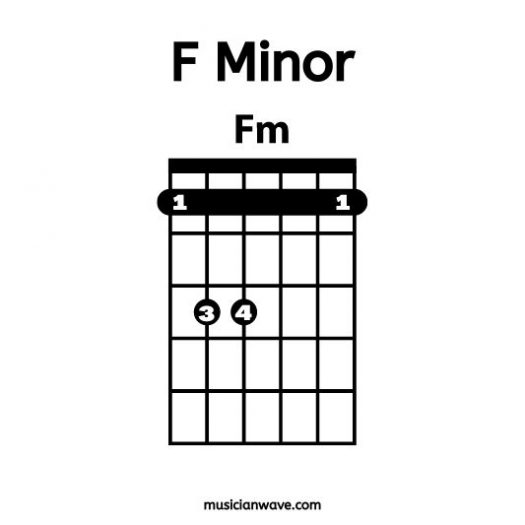
Now that you know how to do E Minor, going from F Major to F Minor is pretty much the same thing. You just leave out your second finger. There is a recurring step you need to do in order to get from a Major to a Minor. To play any Minor chord, you need to know the Major and then just move the 3rd note down the fretboard by a half step.
12. G Minor
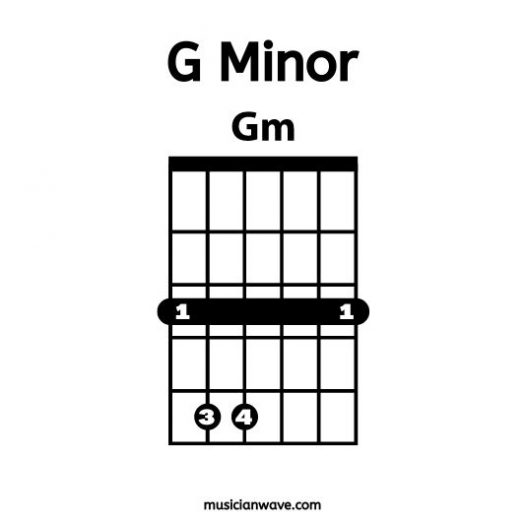
G Minor is a barred chord like some others that we’ve learned so far. To play it, you need your first finger covering the whole of the 3rd fret and then your third and fourth fingers playing the A and D strings on the fifth fret.
13. A Minor
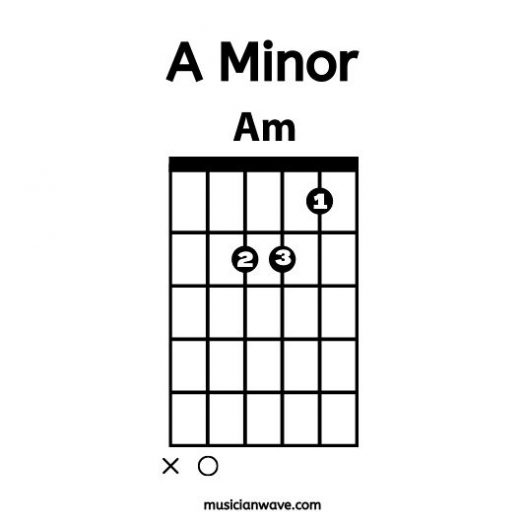
A Minor is very close to A Major, but instead of the fourth finger, you move it down by a half step, and then you play it with your first finger on the first fret on the B string.
14. B Minor
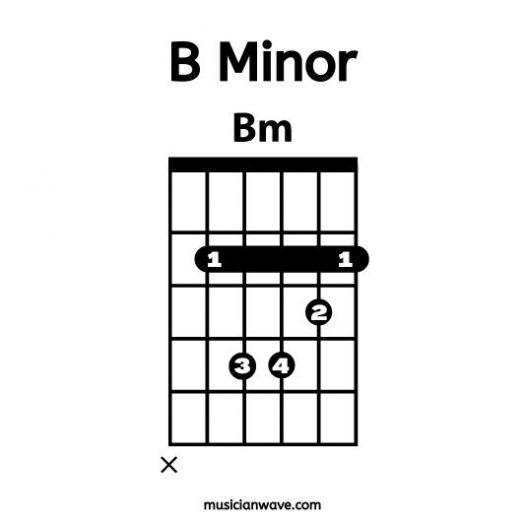
B Minor is also a barre chord; because of that, it’s also one of the more complicated ones when you’re just starting out. There are some easier versions of most of the barre chords, but if you decide to use some of those, it’s important to get back to the normal version of the chord so you don’t get stuck with playing “half a chord.”
Conclusion
Learning to play guitar can be difficult but also fun at the same time. The most important thing is to take your time and don’t get frustrated. But once you figure out how to read, practice, and play chord diagrams, as I’ve shown you in this article, you can learn any song out there!





